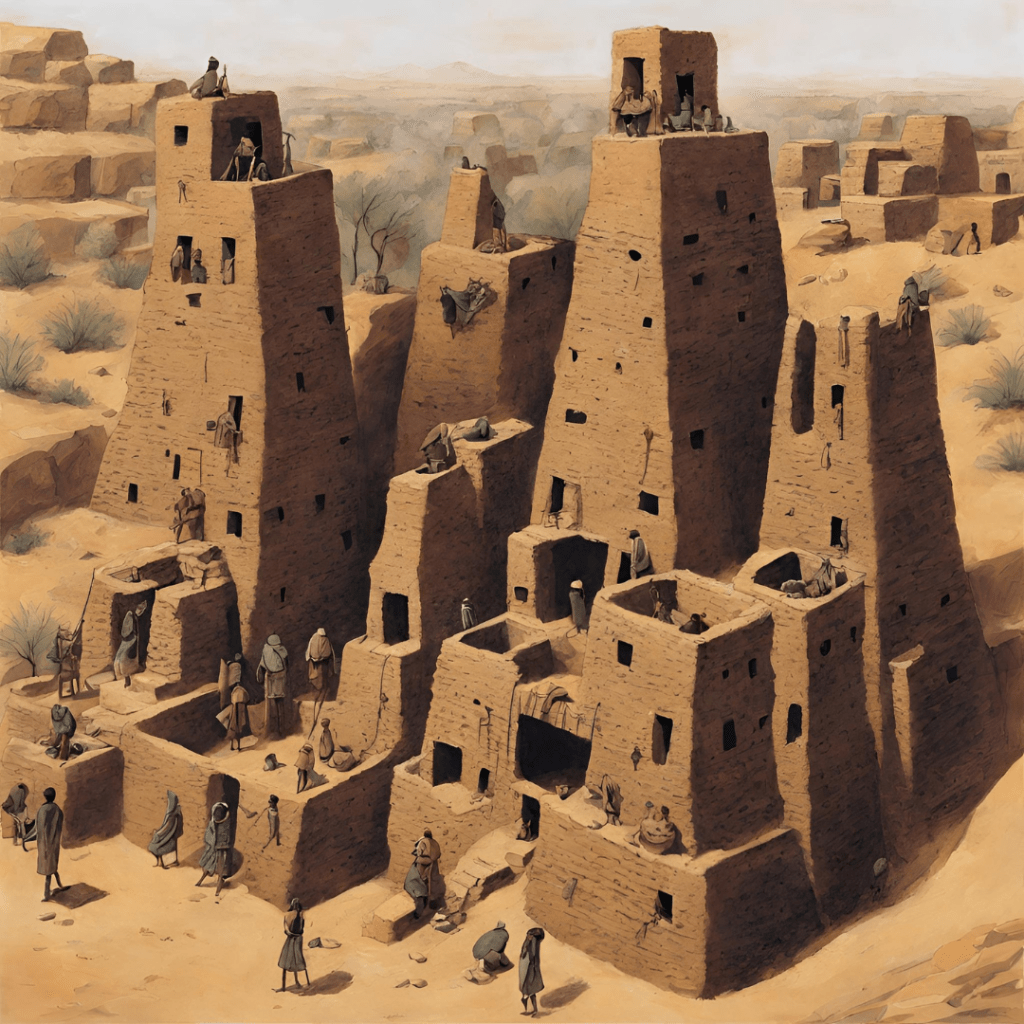This is a short blog. 🙂
In the heart of Africa, nestled within vibrant landscapes, ancient communities thrived with a unique harmony that mirrored not just the laws of nature but also the profound forces of philosophical thought. These communities were not mere clusters of homes; they were living expressions of the inhabitants’ inner spiritual beliefs about humanity, nature, and the cosmos. According to Professor Maillu and several authors, Africans had a special relationship with their environment. They emulated nature in their doings because they learnt from her. Let’s talk about the ways they did that.
African villages and residential areas were masterfully designed to align with the natural order. Just like our bodies have different parts that work together, communities had different areas for specific activities. For example, the leader’s home was close to important places like the shrine (a special place for ceremonies), the market, and where the women lived. It was a bit like how our heart is in a special place in our bodies, close to other important organs. Like the intricate patterns found in the natural world, the layout of these communities was purposeful and deliberate to benefit the collective whole.
Some communities took symbolism to another level by designing their settlements to resemble the human form. A fascinating example is found among the Dogon people, who lived in cliffs south of Niger’s waters. Their communities were laid out in a north-south direction, symbolising the human body. The blacksmith’s forge represented the head, community shrines the feet, and women’s menstrual huts the hands, creating a holistic representation of the human form within their living spaces.
How did this community adapt to living in desert like conditions?

The Kalenjin community, for example the Nandi still to date believe that when burying the dead, the bodies should face east. So should the bed for sleeping. The body must face east. This shows how much nature was part of life.
Villages weren’t just physical spaces; they embodied a deeply spiritual essence. The arrangement of structures and spaces reflected a profound connection between the earthly and the divine. The communities became living canvases upon which the spiritual thoughts and beliefs of the people were vividly painted, influencing their daily lives and interactions.
The ancient African communities stand as testaments to the intricate relationship between humanity, nature, and spirituality. The deliberate design and layout of these communities were not merely functional; they were expressions of a profound worldview. As we marvel at the anthropomorphic designs and symbolic arrangements, we gain insights into a time when communities saw themselves as integral parts of a greater cosmic order. In exploring these ancient blueprints, like we do with the communities like the Ancient Maya, Ancient Egypt and Dogon, we learn the lost art of our interconnectedness with nature and the cosmos, lost in the barbaric views civilization offers us.
By Kulture Queen
